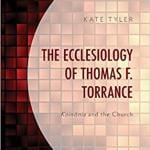The Isaianic theme of Israel being called to be a “light to the Gentiles” (42:6; 49:6) finds expression in the mission theology of Luke-Acts. In the Lucan infancy narrative, Simeon announces that in the baby Jesus he has seen ‘a light for revelation to the Gentiles’ (Lk 2:32; echoing Ps 98:3; Isa 52:10; 49:6). This motif is also paradigmatic in Acts where Jews and Gentile alike are co-recipients of the salvation through Jesus. Walter Kaiser suggests that Acts 1:8 is actually a restatement of what God had intended in Isaiah 49:6.[1] In Luke’s depiction of the episode at Pisidian Antioch, Paul justifies his turning to the Gentiles in the face of Jewish recalcitrance by quoting Isaiah 49:6: “I have set you to be a light for the Gentiles, so that you may bring salvation to the ends of the earth” (Acts 13:47). The “you” is arguably Paul or other missionaries like Barnabas in Luke’s reckoning.[2] The consistent identification of Jesus as the Servant of Isaiah (Lk 4:16-20; Acts 3:13, 26; 4:27, 30) is interrupted by the ascription of the Servant’s role in being a light to the nation to Paul and Barnabas. As C.K. Barrett notes: “Paul is a light to the Gentiles only in virtue of the Christ whom he preaches; Christ is a light to the Gentiles as he is preached to them by his servants.“[3] The point of the statement is not to imply a rejection of the Jews or the cessation of a Jewish mission, but rather, that in the same way that Christ went to his people (i.e. Israel, Acts 13:26), Christ also has a mission to the Gentiles and the point is that this two-pronged mission guided Paul’s missionary endeavours.[4] In another speech before King Agrippa II, Paul declares that everything he proclaims is in accordance with the prophets and Moses, whereby after the Messiah suffers and rises, he (i.e. the Messiah) would “proclaim light both to our people and to the Gentiles” (Acts 26:22-23). F. Scott Spencer charts the logic of the passage as it relates to the development of the motif of “light” in Acts 26:
- The risen Jesus originally revealed himself to Paul as blinding, enveloping ‘light from heaven’ (26.13).
- The risen Jesus commissioned Paul to testify to what he had seen before Gentiles (as well as Jews) in order that ‘they may turn from darkness to light’, as Paul had done (26.16-17).
- The risen Jesus continued to ‘proclaim light’ to both Jews and Gentiles – the same mission he had assigned to Paul (26.23).[5]
According to Luke, the Pauline mission is a continuation of the Isaianic work of Jesus, where the risen Messiah proclaims light in and through him to the nations.[6]
Thus, in Luke-Acts, the message of salvation is the proclamation by the exalted Messiah in his appointed ambassadors to both Jews and Gentiles. Walter Kaiser sums it up well: ‘These New Testament believers saw Isaiah 49:6 to be an authorization addressed directly to them, just as surely as the audience of Isaiah’s day understood it.’[7]
[1] Walter C. Kaiser, Mission in the Old Testament: Israel as a Light to the Nations (Grand Rapids, MI: Baker, 2000), p. 61.
[2] The text shifts from the plural pronoun ‘us’ (h9min) to the singular pronoun ‘you’ (se) leading to some confusion as to who the witnesses are.
[3] C.K. Barrett, The Acts of the Apostles (ICC; 3 vols.; Edinburgh: T&T Clark, 1994), vol. 1, p. 658.
[4] Peter Bolt, ‘Mission and Witness,’ in Witness to the Gospel: The Theology of Acts, eds. I. Howard Marshall and David Peterson (Grand Rapids, MI: Eerdmans, 1998), p. 207.
[5] F. Scott Spencer, Acts (Sheffield: Sheffield Academic Press, 1997), p. 228.
[6] Köstenberger and O’Brien, Salvation to the Ends of the Earth, p. 142.
[7] Kaiser, Mission in the Old Testament, p. 61.












